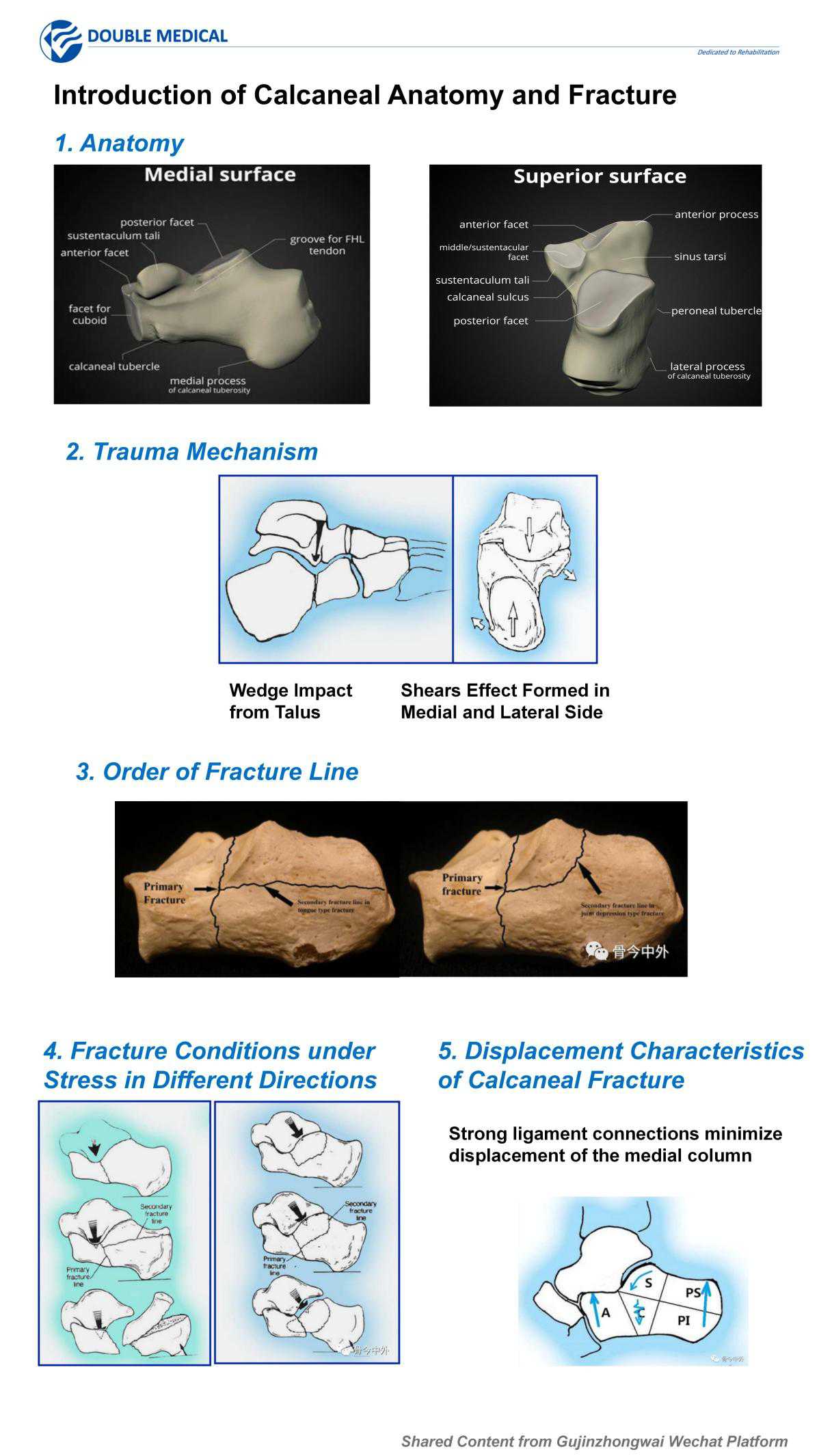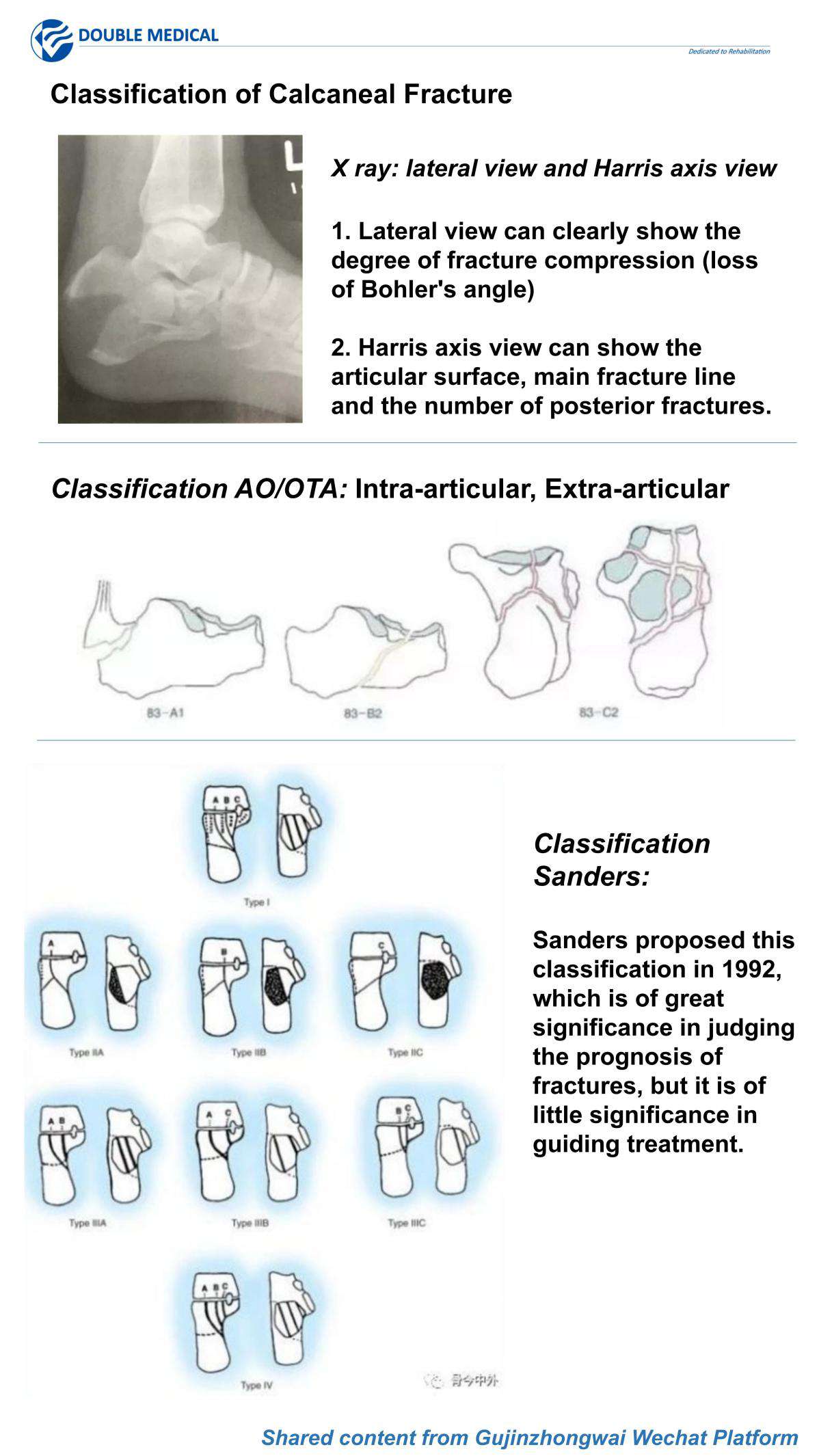Categories
Recent Posts
The calcaneus is the largest tarsal bone. Fractures of the calcaneus often involve injuries to other parts. Treatment requires anatomical reduction: restore the overall shape of the calcaneus; restore the subtalar joint flatness and the normal anatomical relationship between the three joint surfaces; restore the GissaneAngle, BohlerAngle, PriesAngle and the weight axis of the hind foot. It is necessary to attach great importance to the treatment of calcaneal fracture and reduce the occurrence of complications as far as possible.
Trauma Mechanism Proposed by Essex-Lopresti in 1952:
1. Fracture caused by impact from lateral side of talus to G angle
2. Calcaneus evaginates, forming lateral wall and main body
3. Residual force enters the inner column
4. Force extends to the anterior column, forming fracture or dislocation of the anterior column
5. Force acts backward on the posterior articular surface, causing articular surface compression fractures or tongue-type fractures
If you have any questions about our sharing, please feel free to contact us. In our next presentation, we will talk about the treatment techniques of calcaneal fractures and orthopedic implants.
Classification of Calcaneal Fracture
#Harrisaxisview #Classification AO/OTA #Classification Sanders
